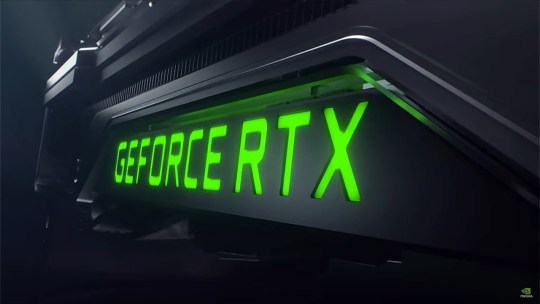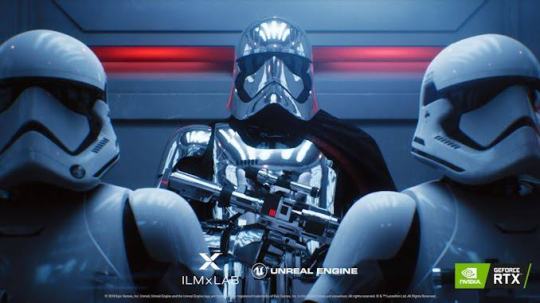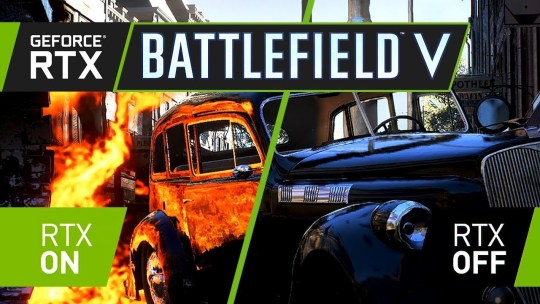#eduvogue nvidia vega gtx rtx redeon gpus raytracing AMD
Explore tagged Tumblr posts
Text
The Future of Ray Tracing.
About Ray Tracing

Hey folks lets talk about Graphics and the big news around Ray tracing computer graphics have come in an incredible way since the days of the first video game. Games started off as grids of white squares on a gray background and they've advanced through 2d scenes with 8 and then 16 bit color to polygons complex textures and full 3d. Today games use tools like tessellation shaders occlusion and mapping to achieve nearly photorealistic results and we may be getting closer to that holy grail of lifelike graphics Ray tracing. Let's back up a bit since those early 3d days some of the biggest improvements in graphics have had to do with the way scenes render shadows and reflections, in 2004 doom 3 introduced some of the first high-quality dynamic shadows in gaming this meant the shadows moved with the lights and the characters in the game and the results were fantastic, eerie lighting cast long shadows on catwalks and when enemies ran through hallways lit by swinging lights they cast chaotic shadows that moved with them as they ran it all worked together to thoroughly freak out gamers of the day. Those great shadow and lighting techniques have come a long way since doom 3 but they are still today fundamentally based on the same idea called rasterization. In rasterization a scene is drawn pixel by pixel with the game engine checking things like distance texture proximity light sources and occlusion whether or not anything is in the way before they pick a color for that pixel you move pixel by pixel through a scene and calculate the color for each one based off this physics and geometry of the scene around you eventually you build an image in rasterization lighting is particularly challenging. Light sources kind of project a field where things inside that field get lighter on one side the side facing the light and cast a shadow on the other side but in the real world light doesn't just move in a straight line like that it bounces and diffuses and passes through objects all depending on what they're made of and that's a lot to account for. In rasterization for each light source the computer works out if something is blocking the path of that light and if it is the computer runs through a series of calculations to work out what to do next and the simplest it'll just cast a shadow more complex processes like ambient occlusion try to adjust for the objects in the scene tweaking the lighting to account for the way objects reflect light and cast some shadows on each other but still these methods are relatively crude the simplest forms of ambient occlusion called screen space ambient occlusion or SSAO only account for the depth of an object in the scene, it essentially tries to put more shadows on objects behind other objects but it doesn't actually account for where the lights in the scene are even advanced ambient occlusion at best creates diffuse shadows that still don't actually relate to where light is coming from and all of these methods struggle with direct light harsh shadows mixed lighting basically the wave reflections shadows and highlights all work in the real world. All of this is an attempt to get to what people call global illumination which is the idea that a graphic scene could be rendered just like the real world and here's where ray tracing comes in in the real world light sources emit photons that travel in a straight line until they hit a surface and there they can either pass through the surface be reflected or absorbed these photons bounce around and eventually some of them make it into your eyes and that's how you see. Ray tracing tries to work the exact same way but backwards it draws millions of rays outwards from the camera your perspective in a video game and then it calculates how they'll bounce around the scene whenever array bounces off an object another ray called a shadow ray is drawn towards the light sources in the scene if there's a clear path that first ray makes the object it bounced off writer and if it's blocked it casts a shadow instead the big upside to ray tracing is hyper realistic reflections shadows and highlights that don't need to be pre-rendered all of this lighting detail can be generated based off the geometry in the scene and as characters and lights move around the light changes in dynamic and realistic ways. Ray tracing is particularly good at reflections and refraction things like light moving through a glass of water and color spill or the way that a brightly colored object can change the color of other objects near it. Now ray tracing is potentially actually a simpler system than layering lighting models with shadows and shaders and occlusion but calculating the paths of millions of rays can take an incredible amount of processing power to fully rate raise a standard 1920 x 1080 HD scene you need to draw a minimum of 4 million rays to start getting good results and potentially 50 million or more the backwards system of drawing the Rays out from the camera instead of out from light sources is actually a way to try to cut down on processing by only rendering the Rays that will actually be seen by the player even with this backwards ray trick processing ray-traced images has traditionally been incredibly slow and no games currently used real-time ray tracing
Ray Tracing in Movies

The technology has been entirely limited to pre-rendered video and Hollywood movies animated Studios like Pixar extensively used ray tracing in their films and part of what makes modern special-effects blend so well with real-world footage is the use of ray tracing to create accurate lighting for every part of the scene now these Studios have the luxury of using render farms with dozens of computers working together and even here each frame can take hours to draw instead of the fraction of a second we need for a playable game “a single frame can take more than 24 hours to render”.
Ray Tracing for gaming

The new technology might be changing this, Microsoft has unveiled a new set of tools in DirectX 12 which supports ray tracing. DirectX is the set of graphics tools that power most windows games at a fundamental level and their newly announced DXR API supports ray tracing in games Nvidia also announced their own set of tools called RTX that would leverage their own hardware to speed up real time ray tracing in games, DXR should work on older Nvidia cards as software but RTX actually depends on hardware acceleration that's currently only found on Nvidia's volta line of graphics cards specifically RTX is supposed to add hardware acceleration for ray tracing area shadows reflections and ambient occlusion now this should all work together to create a more lifelike scene not one to be left out AMD announced updates to their radeon ray tracing system including support for real-time ray tracing in games and promised low-level driver support for Microsoft's DXR in the near future unity the game engine of choice for many indie developers is also incorporating AMD's Ray tracing tech into their game design tools though only for what's called baked or non moving lights so are we at the verge of a ray tracing revolution well not quite yet and here's where things actually get a little fishy. NVIDIA is saying it's volta cards will support ray tracing at a hardware level the way current graphic cards have specialized circuits and hardware for shaders or decoding video however on current Volta cards it's unclear what those special Hardware features actually are now part of the problem is that there are almost no volta graphics cards out there most volta cards are actually specialized boards used for supercomputers and AI research and the only one even approaching a consumer product is the $3,000 Titan VIII the recently announced GV 100 Quadro is a professional card that built on Volta and it looks to be extraordinarily powerful but it still isn't really a gaming card, rumors have also suggested Nvidia may entirely skip consumer cards in the volta line and while NVIDIA has said future graphics cards for gamers will incorporate the same hardware acceleration for ray tracing we don't actually know what those future graphics cards will be and as amazing as these demos look there's still more reason to be skeptical Epic's ray tracing demo at GDC was running in real time but it was running on an NVIDIA GTX station a computer that starts at around $50,000 and packs a 20 core processor in with four tesla v 100 cards each of which runs around $9,000 now confusingly tesla was also in the name of a previous Nvidia architecture but the tesla v 100 actually uses a voltage chip as great as these demos look many of them still actually had to use traditional rasterization on parts of the scene to keep the frame rates up as well this also isn't the first time we've heard announcements about real time ray racing Nvidia actually announced real time ray tracing on their Kepler chips at GDC 2012 six years ago so where does all this leave us ? But ray tracing is legit tech that really could make graphics look amazing but the demos we've seen this last year aren't even entirely ray-traced and they were running on hardware that is a long ways from what the average gamer might own Plus this isn't the first time companies have claimed ray tracing was just around the corner Intel made these claims in 2010 and so did Nvidia in 2012 there's another part of this to that as a PC gamer I hate to even talk about it but it's the consoles if running these raytrace demos on a normal gaming PC seems like a fantasy you try getting them to run on a ps4 integrating ray-tracing into a game isn't like flipping a switch it'll take serious work on the part of developers to bring ray-traced graphics into a game I'm sure in the next few years some rave developer come out with an insane ray-traced project for the PC master-race but until the consoles can come close to handling this sort of graphics rendering great racing for all may still be a long ways off.
0 notes